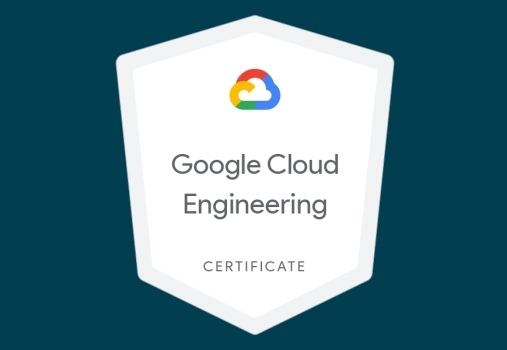- Home
- »
- Data Analytics




Awarded by Telangana Higher Education
as Emerging EdTech of India
 Job - Ready Course
Job - Ready Course
 Job - Ready Course
Job - Ready Course
Kickstart your career at the best Data Analytics Certification
Join the best Data Analytics course in Hyderabad. Learn Power BI, Tableau, SQL & Python with expert trainers and become job-ready.
- Mode: Offline | Online | Live Recorded Sessions
- Sr Data Analyst with 8+years experience as trainers
- Guaranteed virtual internships with Accenture & PWC
- Certificates from Nasscom and Microsoft
- 7+ Real Time projects & 1 individual projects
- Guaranteed Interview Opportunities
- 180 Hours of learning
In Collaboration With


Key-Highlights
Hybrid Mode of learning (Online, Offline and access to live recorded sessions)
Guest Lectures with Industry leaders from Microsoft & IIM Faculty
10+ Capstone Projects + 1 Individual end-to-end Project
1:1 Interactions with mentors to track progress
Exclusive batches for beginners
Exclusive Community access
Corporate Readiness Program
Profile & Resume building sessions
Accreditations and Certification
Course Overview
This Data Analytics course in Hyderabad is designed to equip learners with the essential skills required to build a career in analytics. By the end of the program, candidates will have developed industry-relevant expertise in tools such as Python, SQL, Power BI, Tableau, Excel, and Alteryx. Our job-oriented Data Analytics training in Hyderabad with placement support prepares students to excel in a dynamic and evolving industry.
The topics covered in this Data Analytics program and the modules you will learn are:
- Module 1 – Python Fundamentals and OOPs Concept
- Module 2 – Data Handling with Pandas APIs and Web Services
- Module 3 – Complete Data Visualization and Advanced Data Analysis
- Module 4 – Advanced Data Handling with Pandas and Web Scraping
- Module 5 – Statistics with Probability Distributions and Inference
- Module 6 – Advanced SQL with Excel: Advanced Formulas and Functions
- Module 7 – Advanced Visualizations in Tableau and Power BI
- Module 8 – Alteryx for Data Preparation and Transformation, and Jira
- Module 9 – Integration with Other Tools
- Module 10 – Best Practices and Case Studies
The key tools and concepts you will learn in this Data Analytics program include:
- Python for Data Analytics: Learn Python from scratch with our job-oriented Data Analytics training in Hyderabad to clean and analyze data.
- Seaborn Visualization: Gain expertise in Seaborn to create interactive charts, part of our Data Analytics certification Hyderabad.
- Advanced Excel for Analytics: Handle large datasets with PivotTables, VLOOKUP & automation, covered in our Hyderabad data analytics course.
- Statistics for Data Analytics :Master probability, distributions, and testing, essential for a career in data analytics in Hyderabad.
- Power BI Training: Learn Microsoft’s Power BI tool to design dashboards, offered in our Power BI and Tableau course in Hyderabad.
- Alteryx Training : Build skills in low-code automation, included in our data analytics training program Hyderabad.
- Jira for Analytics Projects: Learn project management with Jira as part of our data analytics course with placement in Hyderabad.
- SQL Training : Learn to query and manage data with SQL, an important module in our best data analytics training in Hyderabad.
- Tableau Certification: Build dashboards and data visualizations with Tableau in our data analytics certification course Hyderabad.
Data Analytics is one of the most in-demand skills today. With businesses adopting digital transformation, there’s a rising need for skilled data analysts in Hyderabad and across India who can convert raw data into actionable insights. Our Data Analytics course in Hyderabad with placement support prepares learners to meet this demand.
- Data is everywhere: With the surge of online transactions and digital platforms, industries need professionals trained in data analytics certification in Hyderabad to analyze and interpret large datasets.
- Data-driven decision making: Organizations rely heavily on analytics to make smarter business decisions, reduce risks, and improve efficiency. Our Hyderabad Data Analytics training equips you with these skills.
- Competitive edge: Companies want experts who understand customer behavior, optimize operations, and create better strategies this is why our job-oriented Data Analytics course in Hyderabad is industry-focused.
- Rising demand across sectors: From healthcare and finance to retail, logistics, and IT, data analytics jobs in Hyderabad are growing rapidly, creating huge career opportunities.
- Shortage of skilled professionals: With high demand and fewer trained professionals, learners who complete our data analytics training in Hyderabad with real-time projects can secure excellent job opportunities.
A typical day in the life of a data analyst is collecting, cleaning and filtering data using industry relevant tools and skills
- Review real time dashboards and metrics using Power BI and Tableau to achieve business goals.
- Extract raw data from databases using SQL and clean with tools like Python and Pandas to get accuracy.
- Identify patterns, analyze data and interpret results using advanced Excel.
- Work collaboratively with marketing, finance, and product teams to understand business needs and help in data-driven decisions.
- Make strategies by translating data into actionable insights for better decision making, ROI, customer experience, and improve the overall performance of the businesses.
- Present visually appealing dashboards and reports to communicate findings to decision makers.
- Continuous learning to keep up with the trends, new tools, and platforms to stay ahead.
Tools Covered
Know Your Mentors

Swapnil
Sr. Data Analyst
20 Years Experience

Vishnu Murthy
Sr. Data Scientist
20 Years Experience

Satya Kumar
Sr. Data Scientist
12 Years Experience


Satish
Sr. Data Scientist
5 Years Experience

Program Highlights
- Learn from seasoned professionals who bring real world experience to every class
- Practical and engaging classes designed to make data analysis concept easy to understand.
- Whitescholars structured approach of learning makes the sessions interactive and interesting.
- Work on real case studies and projects that reflects the real business challenges
- Understand how data drives decisions in industries and gain firsthand skills.

- Become a part of a network of 100+ hiring partners to access job openings and industry insights.
- Receive regular updates on relevant roles and job openings in the field of data analytics.
- Build meaningful connections with industry experts and recruiters
- Be one step ahead in the competitive market with Whitescholars

- Developed with inputs from leading senior data analysts to reflect what is required by the industries.
- Hands-on training methodology used to emphasize practical learning.
- Master SQL, Excel, Power BI, Tableau, and other data visualization techniques.
- Stay ahead with a program designed to meet the current market and employer expectations.
- Work on weekly tests, regular assignments, live case studies and 7 real time industry relevant projects and one individual project.

- Root cause analysis using log classification
- Security threat detection using behavioral analytics
- Product recommendation systems and customer behavior analysis
- Proactive problem management with predictive insights
- Inventory management
- Store layout optimization

Program Highlights
Become a Data Analyst pro by Industry expert Led training and master the concepts
- Learn from seasoned professionals who bring real world experience to every class
- Practical and engaging classes designed to make data analysis concept easy to understand.
- Whitescholars structured approach of learning makes the sessions interactive and interesting.
- Work on real case studies and projects that reflects the real business challenges
- Understand how data drives decisions in industries and gain firsthand skills.

Gain access to real world job opportunities with WhiteScholars backed by a strong network of industry professionals
- Become a part of a network of 100+ hiring partners to access job openings and industry insights.
- Receive regular updates on relevant roles and job openings in the field of data analytics.
- Build meaningful connections with industry experts and recruiters
- Be one step ahead in the competitive market with Whitescholars

The data analytics course is designed with insights from top Data scientists to meet real industry demands.
- Developed with inputs from leading senior data analysts to reflect what is required by the industries.
- Hands-on training methodology used to emphasize practical learning.
- Master SQL, Excel, Power BI, Tableau, and other data visualization techniques.
- Stay ahead with a program designed to meet the current market and employer expectations.
- Work on weekly tests, regular assignments, live case studies and 7 real time industry relevant projects and one individual project.

The course prepares you for real-world roles by offering practical exposure through case studies, live projects, and assignments.
- Root cause analysis using log classification
- Security threat detection using behavioral analytics
- Product recommendation systems and customer behavior analysis
- Proactive problem management with predictive insights
- Inventory management
- Store layout optimization
- Anomaly Detection For Real-time Monitoring

Learner's Journery

Curriculum and Modules
1. Python
- What is programming?
- History of Python
- Setting up the development environment
- IDLE
- Jupyter Notebook
- VS Code
- Writing and running your rst Python program
2. Basic Syntax
- Comments
- Indentation
- Printing to the console
3. Variables and Data Types
- Numbers (integers, oats)
- Strings
- Booleans
4. Basic Operators:
- Arithmetic operators
- Comparison operators
- Logical operators
5. Control Flow
- Conditional statements (if, elif, else)
- Loops (for loops, while loops)
- break, continue, and pass statements
6. Functions
- Dening and calling functions
- Function arguments and return values
- Scope and lifetime of variables
- Lambda functions
7. Lists
- Creating and accessing lists
- List operations (indexing, slicing, adding, removing elements)
- List methods
- append
- extend
- insert
- remove
- pop
- clear
- index
- count
- sort
- reverse
8. Data Structures: Tuples and Sets
- Creating and accessing tuples
- Tuple methods
- Creating and accessing sets
- Set operations
- union
- intersection
- difference
9. Data Structures & Dictionaries
- Creating, accessing, and modifying dictionaries
- Dictionary methods
- keys
- values
- items
- get
- pop
- update
10. Working with Strings
- String operations
- Concatenation
- Slicing
- Formatting
- String methods
- find
- replace
- split
- join
- lower
- upper
- strip
Intermediate Concepts
11. File Handling
- Reading from les
- Writing to les
- Working with CSV les using the csv module
12. Modules and Packages
- Importing modules
- Standard library overview
- math
- datetime
- random
- Installing and using third-party packages (pip)
13. Error Handling
- Understanding exceptions
- try, except, else, nally blocks
- Raising exceptions
14. Object-Oriented Programming (OOP)
- Classes and objects
- Attributes and methods
- Inheritance
- Polymorphism
15. Comprehensions
- List comprehensions
- Dictionary comprehensions
- Set comprehensions
1. Decorators and Generators
- Understanding and using decorators
- Creating and using generators
2. Regular Expressions
- Introduction to regular expressions
- Using the re module for pattern matching
3. Advanced Data Handling with Pandas
- Introduction to Pandas
- DataFrames and Series
- Reading from and writing to different le formats
- CSV
- Excel
- JSON
- Data cleaning and manipulation
4. Data Visualization
- Introduction to Matplotlib and Seaborn
- Plotting graphs and charts
- Customizing plots
5. Web Scraping
- Introduction to web scraping
- Using BeautifulSoup and requests
- Handling web scraping challenges
- pagination
- dynamic content
6. Advanced Python Libraries
- Introduction to NumPy for numerical computing
- SciPy for scientic computing
- Exploring additional libraries as per interest
- TensorFlow for machine learning
Introduction & Excel Basics
- Introduction to Data Analysis
- What is Data Analysis?
- Importance of Data Analysis and Visualization
Excel Fundamentals
- Introduction to Excel Interface
- Data Entry, Formulas, and Functions
- Data Types and Basic Formatting
Working with Data in Excel
- Sorting, Filtering, Conditional Formatting
- Basic Data Validation
- Basic Data Analysis in Excel
- Basic Math and Statistical Functions
- Descriptive Statistics (SUM, AVERAGE, COUNT, MIN, MAX)
Introduction to Pivot Tables
- Creating and Customizing Pivot Tables
- Grouping Data, Creating Calculated Fields
Advanced Formulas and Functions
- IF, VLOOKUP
- HLOOKUP
- INDEX-MATCH
- Nested Functions
- Error Handling (IFERROR)
- Data Visualization in Excel
Creating Charts and Graphs
- Bar
- Line
- Pie
- Formatting and Customizing Charts
Goal Seek
- Solver
- What-If Analysis
Working with Large Data Sets
- Text-to-Columns
- Flash Fill
- Data Cleaning and Preparation in Excel
- Removing Duplicates
- Text Functions (LEFT, RIGHT, MID)
- Date and Time Functions
- String Manipulation
Macros and Automation
- Introduction to Excel Macros
- Recording and Running Macros
Introduction to Databases and SQL
- What is a Database?
SQL Basics:
- SELECT, FROM, WHERE
- Setup SQL Environment (MySQL/PostgreSQL)
SQL Queries for Data Analysis
- Filtering Data (AND, OR, NOT)
- Sorting Data (ORDER BY)
- Using Wildcards in Queries
Aggregation Functions in SQL
- COUNT, SUM, AVG, MIN, MAX
- GROUP BY and HAVING
Joining Tables in SQL
- INNER JOIN, LEFT JOIN, RIGHT JOIN
- Working with Multiple Tables
- Subqueries and Nested Queries
- Writing Subqueries
- Working with Multiple Tables
Subqueries and Nested Queries
- Writing Subqueries
- Combining Queries (UNION, INTERSECT)
Advanced SQL Functions
- Window Functions (ROW_NUMBER, RANK, DENSE_RANK)
- CTEs (WITH Queries)
Data Manipulation in SQL
- INSERT, UPDATE, DELETE Statements
- Transactions and Rollback
Introduction to Tableau / Power BI
- Tableau Interface, Connecting to Data Sources
- Creating Basic Visualizations
- (Bar, Line, Pie Charts)
Advanced Visualizations in Tableau / Power BI
- Heat Maps, Scatter Plots, Histograms
- Dual-Axis and Combination Charts
- Dashboard Design in Tableau
- Building Interactive Dashboards
- Filters, Parameters, Actions
Dashboard Design in Tableau / Power BI
- Building Interactive Dashboards
- Filters, Parameters, Action
Tableau / Power BI Advanced
- Data Preparation in Tableau
- Data Blending, Joins, and Relationships
- Pivoting and Splitting Data
Advanced Calculations in Tableau / Power BI
- Calculated Fields, Table Calculations
- Level of Detail (LOD) Expressions
Storytelling with Tableau / Power BI
- Building Stories and Presenting Data
- Best Practices for Effective Dashboards
Data Preparation in Tableau
- Data Blending, Joins, and Relationships
- Pivoting and Splitting Data
Advanced Calculations in Tableau / Power BI
- Calculated Fields, Table Calculations
- Level of Detail (LOD) Expressions
Storytelling with Tableau / Power BI
- Building Stories and Presenting Data
- Best Practices for Effective Dashboards
Introduction to Alteryx
- What is Alteryx?
- Overview of Alteryx Designer
- Key features and use cases
- Installing and setting up Alteryx
Data Input and Output
- Input Data Tool
- Output Data Tool
Data Preparation and Transformation
- Select Tool, Filter Tool, Sort Tool
- Data Cleansing Tool
- Formula Tool
- Join Tool
- Union Tool
Aggregations and groupings
- Cross Tab and Transpose Tools: Reshaping data
- Reporting Tools: Charts, tables, and dashboards
Overview of predictive tools
- Regression analysis (Linear, Logistic)
- Decision trees and clustering
- Time series analysis
Creating macros
- Batch processing
- Using the Alteryx Scheduler
Using Alteryx Server
- API integrations
- Python and R Tool
- Error handling and debugging workflows
- Descriptive Statistics
- Measures of central tendency: mean, median, mode
- Measures of dispersion: range, variance, standard deviation, interquartile range
- Data Visualization
- Histograms, bar charts, pie charts
- Box plots, scatter plots
- Probability Basics
- Probability theory and rules
- Conditional probability and Bayes’ theorem
- Probability distributions: discrete and continuous
- Discrete Distributions
- Bernoulli
- Binomial
- Poisson distributions
- Continuous Distributions
- Uniform
- Normal (Gaussian)
- Central Limit Theorem
- Multivariate Distributions
- Multinomial distribution
- Multivariate Normal distribution
- Descriptive Statistics
- Measures of central tendency: mean, median, mode
- Measures of dispersion: range, variance, standard deviation, interquartile range
- Histograms, bar charts, pie charts
- Box plots, scatter plots
- Probability Basics
- Probability theory and rules
- Conditional probability and Bayes’ theorem
- Probability distributions: discrete and continuous
- Sampling and Sampling Distributions
- Point Estimation and Properties of Estimators
- Bias
- Variance
- Mean Squared Error (MSE)
- Interval Estimation
- Condence intervals for means and proportions
- Hypothesis Testing
- Null and alternative hypotheses
- Type I and Type II errors
- p-values and signicance levels
- t-tests
- chi-square tests
- ANOVA
360 Degree Career Assistance
Get resume tips and upgrade it to make it more professional and impressive, so it stands out to recruiters correctly. Get guidance to build a strong portfolio that shows skills, real-time projects, and achievements in a professional way. Learn how to highlight strengths and tailor resumes for different roles. Structure your portfolio to reflect technical expertise and problem-solving abilities. Present your journey, growth, and real-time experience with confidence and clarity. Stand out to recruiters with a powerful resume and portfolio that showcase skills, projects, and potential.
- 20+ sample resumes.
- Github profile building.
- Project portfolio creation.
- Get tips to make ATS friendly resume.
- Exclusive resume guidance classes by the placement coordinator.
- Customised Resume as per the Job description and company profile.
- One-on-one resume Feedback and Suggestion tips to avoid common resume mistakes.

Get help to optimize your LinkedIn profile and make it look more professional and impressive to grab recruiters attention, boosting visibility, helping more people to connect, and growing professional network. WhiteScholars guides on how to write a strong headline, craft a clear summary, and highlight your skills, projects, and achievements in the right way. An optimized linkedin profile can open doors for your career. Make your LinkedIn profile work for you and get noticed by the right people.
- Get tips to optimize Linkedin.
- Learn how to build more connection and professional network with HRs.
- Explore and understand the best practices for writing impactful LinkedIn headlines and summaries that catch the recruiter's attention.
- Learn certificate and project updation in the featured section.
- Learn how to find company HR’s contact information.
WhiteScholars offers exclusive programs to step into the corporate world with confidence. The CRP modules are designed to help and guide you to improve your verbal communication skills to present your idea, confidently and professionally. Through interactive sessions,mock interviews and group discussions. Whitescholars focus on enhancing public speaking, presentation skills is essential for building confidence at the work place. In addition to this, the program also covers email etiquettes and professional behaviour preparing you to adept seamlesslesy to the office environment.
- Interactive group discussions and Jam sessions
- Student activities to develop interpersonal skills
- Develop essential soft skills to effective present yourself
- Regular project presentations to improve presentation skills.
- Build strong leadership skills and the potential to work effectively in teams.
- Improve your decision-making abilities through practical and real-world case studies.

Get interview tips and get prepared with mock interview sessions that help you boost confidence. Receive personalized feedback to improve your performance. Our expert mentors create real-time interview scenarios, helping to get comfortable with both technical and HR rounds. Learn how to handle difficult questions, structure your responses, and make a strong first impression. Our goal is to help you not just crack the interview but stand out.
- Get expert interview tips
- Practice with mock interview sessions
- Experience real time scenarios with technical and HR rounds
- Master your communication skills and build confidence to speak clearly and impress in the interview.
- Receive personalized feedback to improve.
- Learn how to master the STAR (Situtation, Task, Action, Result) technique to structure your answers.
At Whitescholars, our placement methodology is designed to ensure that every student is industry ready and confident to face the real world challenges. Students are made to understand the specific hiring requirements of the companies and trained with our crashed courses as per the job description.
- Understanding hiring requirements of the companies
- Tailored trainings with customised crash course as per JD
- Exclusive one on one Interview preparation
- Go through a skill gap assessment test
- On clearing it, appear for the interviews else get additional training support
- Benefit from continuous mentorship and expert career guidance during your placement journey

- 20+ sample resumes.
- Github profile building.
- Project portfolio creation.
- Get tips to make ATS friendly resume.
- Exclusive resume guidance classes by the placement coordinator.
- Customised Resume as per the Job description and company profile.
- One-on-one resume Feedback and Suggestion tips to avoid common resume mistakes.

- Get tips to optimize Linkedin.
- Learn how to build more connection and professional network with HRs.
- Explore and understand the best practices for writing impactful LinkedIn headlines and summaries that catch the recruiter's attention.
- Learn certificate and project updation in the featured section.
- Learn how to find company HR’s contact information.
- Interactive group discussions and Jam sessions
- Student activities to develop interpersonal skills
- Develop essential soft skills to effective present yourself
- Regular project presentations to improve presentation skills.
- Build strong leadership skills and the potential to work effectively in teams.
- Improve your decision-making abilities through practical and real-world case studies.

- Get expert interview tips
- Practice with mock interview sessions
- Experience real time scenarios with technical and HR rounds
- Master your communication skills and build confidence to speak clearly and impress in the interview.
- Receive personalized feedback to improve.
- Learn how to master the STAR (Situtation, Task, Action, Result) technique to structure your answers.
- Understanding hiring requirements of the companies
- Tailored trainings with customised crash course as per JD
- Exclusive one on one Interview preparation
- Go through a skill gap assessment test
- On clearing it, appear for the interviews else get additional training support
- Benefit from continuous mentorship and expert career guidance during your placement journey

Career Transitions

Meghna Velluri
Junior Data Scientist | UST

Revanth
Product Support Engineer | ZETA GLOBAL

Kamal
Software Developer | LTI Mindtree

Abhinay
Product Support Engineer | ZETA Global

Jennifer
Junior Data Analyst | Tech Aspiron
Our Alumni Works Here
Calender - On Campus Classes
Lorem
Date
Regular Classes
Weekdays & Weekend
Want to know about upcoming cohort dates?
Fee Structures of Online and Offline
Instructor Led Training
Mode of training: Online
- Online classes: weekdays
- Access to online class recordings for 365 days
- No cost EMI facility
- Informative sessions from Industry Experts
- Interview support services
- Guranteed Interview opportunities
Next Batch: 18th Nov 2025
INR 54,999
INR 45,000
Physical Classroom Session
Mode of training: Classroom
- Only 20 students in one classroom
- No cost EMI facility
- Lifetime access to live recorded sessions
- Informative sessions from Industry experts
- Project presentations to guest faculties
- 360 degree career assistance
- Guranteed Interview opportunities
Next Batch: 18th Nov 2025
INR 64,999
INR 50,000
Hybrid Classes
Mode of training: Online + Offline
- Only 20 students in one classroom
- No cost EMI facility
- Lifetime access to live recorded sessions
- Informative sessions from Industry experts
- Project presentations to guest faculties
- 360 degree career assistance
- Guranteed Interview opportunities
Next Batch: 18th Nov 2025
INR 64,999
INR 50,000

Freshers/Begginers
Tech graduates or graduates from any stream can opt for data analytics course as it doesnt require any coding .

Data Enthusiasts
If you are a Data Enthusiasts and passionate about numbers,patterns and making data-driven decisions. you ‘re in the right place.

Working professionals
If you’re Working pro passionate who rely on data , and making smart data-driven decisions.

Tech Enthusiasts
If you are a tech savvy person and loves to play with data , then this data science course is a must for you

Career Transitioners
Stuck into a job with no growth and want to transition in your career, upskill yourself with data science course with generative AI
Why WhiteScholars is the Best
Data Analytics Training Institute in Hyderabad?
- Affordable data analytics course fees in Hyderabad
- Recognized data analytics certification with placement
- Includes AI course with certification
- Covers complete data analytics syllabus (India standards)
- Options for online, offline, hybrid mode and weekend data analytics course in Hyderabad
- Special batches for beginners and freshers
- Available in online and offline (classroom) modes
- Focused on job-ready skills with live projects
- Guaranteed internship projects
- 100% placement assistance till you get placed.









“Listen to expert on why projects are important to crack interview for Data Science roles”
Salary & Role Trends of Data Analyst
Explore average salaries, job roles, and top hiring companies in the Data Analyst field.
Designation
Annual Salary
Source: Glassdoor
Campanies Who Hire Data Analyst Students







What is the scope of certified Data Analytics in India
- Hiring across industries: With the digital transformation everywhere, there has been a surge in demand of data analyst in India. Data analytics jobs are the most sought after by industries.
- Explosion in Data everywhere: With the huge rise in the generation of data all around the world, data analyst are high in demand to extract, clean and filter data to make actionable decisions.
- Diverse Roles: Companies actively hire certified analysts for various roles as data analyst, marketing analyst, finance analyst, product analyst and data consultant. Research reports that there are 223 plus roles in the field of data analysts and data science.
- Better Salary Prospects: Certified professionals earn 25-30 % on an average.
- Global Reach: Indian data analyst are high in demand not only in Hyderabad but also in countries like USA, UK, Canada and UAE.

Know More About Data Analytics Course
Related Articles In Data Analytics

Wondering what’s Hyderabad’s Top Choice for Software Training? WhiteScholars, For Sure!
Hyderabad, the City of Pearls, has transformed into a thriving IT and Digital Marketing hub over the years. With the…
Read More
Make Your Dream Career a Reality with Guaranteed Placement Assistance at the Best Software Training Institutes in Hyderabad
Whether you’re a student, a working professional, or someone looking to switch careers, our job-oriented data science course will help…
Read More
Best Data Science Training in Hyderabad with Placement – Kickstart Your Career in Data Science
Whether you’re a student, a working professional, or someone looking to switch careers, our job-oriented data science course will help…
Read More
Best Digital Marketing Course Online with Certification in Hyderabad
Are you looking for the best digital marketing course online with certification in Hyderabad? Whether you're a student, job seeker,…
Read More
Best Digital Marketing Course with Placement in Hyderabad – Get Job-Ready with WhiteScholars Academy
Are you searching for a digital marketing course with placement in Hyderabad? Do you want to build a career in…
Read More
Digital Marketing Course After 12th: A Smart Career Move for Students
Choosing the right career path after completing 12th grade can be a daunting task, especially in today’s competitive world. For…
Read More
4 Top High-Demand Skills to Build Your Career in 2025
As we are in 2025, The rise of technology, data-driven decision-making, and digital transformations has made certain skills indispensable for…
Read More
The Rising Threat: Why Cybersecurity is Essential in Today’s Digital Age
Let's explore the significance of cybersecurity in protecting the integrity and confidentiality of the growing landscape of cyber threats and…
Read More
The Complete Data Analyst Handbook: From Job Description to Career Growth
When evaluating potential agencies, consider their expertise in various aspects of design.
Read More
Future-Proof Your Career Essential Skills for 2025
When evaluating potential agencies, consider their expertise in various aspects of design.
Read More
Crack the Data Code: A Beginner’s Roadmap to Data Science
When evaluating potential agencies, consider their expertise in various aspects of design.
Read More
What is Data Science? A Comprehensive Guide to Data Science
When evaluating potential agencies, consider their expertise in various aspects of design.
Read More
Your Ultimate Guide to Data Science Interview Questions in 2024
When evaluating potential agencies, consider their expertise in various aspects of design.
Read MoreGet Certified

Get certification after completion
of your course


Get certification after completion of your course

Get certification after completion
of your internship with us

WhiteScholars Academy – Data Analytics, Data Science Course Training Hyderabad, Digital Marketing

Prashanth Reddy

I recently completed the Data Analyst course at WhiteScholars, and I can confidently say it was one of the best decisions I made for my career!
View Review
nani aditya

I enrolled in the Data Analytics course at White Scholars, and my experience has been genuinely positive. The institute provides a well-structured curriculum
View Review
Ajithesh Reddy

I took up a data analytics course here and finished 2 months of it already. The training given is very industry specific. I have done many guided projects.
View Review
G Phani Datta Kumar

In WhiteScholars institute I took Data Analytics course, why because it is very demanding field in the industry. And the training experience is very good.
View Review
Santhiya Sekar

I choose data analytics as it's one of the trending fields and upcoming one , there are many data analytics jobs in the market so I want to upskill my self
View Review
ramya C

WhiteScholars Helped Me Switch to IT and Land a Data Analyst Job! I worked in a BPO for two years but felt stuck with no career growth. WhiteScholars.
View ReviewWe've got answers
Frequently asked questions
Quick answers to questions you may have. Make an informed decision before embarking on your learning journey.
Data analytics is the process of organizing, and interpreting data to find useful information. It helps spot trends, make predictions, and solve problems. The data goes through steps like collection, cleaning, and sorting. Tools like charts, graphs, and statistics help make the results easier to understand. It turns numbers and facts into clear insights. In short, it helps people make smarter decisions based on evidence.
WhiteScholars offers 4 months intensive Data Analytics Course in Hyderabad with placement support.
Data Analytics courses are offered in both online and offline formats. You can choose the mode that best suits your learning style and schedule.
Upon successful completion of the course, you will receive a recognized certification in Data Analytics.
The course covers essential topics like data cleaning, exploratory data analysis (EDA), data visualization, statistics, predictive modeling, and tools such as Python and SQL.
You will gain hands-on experience in data cleaning, data preprocessing, data analysis, model building, and model deployment.
Yes, the course includes practical exercises, lab sessions, and real-world projects to enhance your learning.
We maintain a low student-to-instructor ratio to ensure personalized attention and support. In Batch 15-20 Students for Data Analytics Course.
At WhiteScholars Kukatpally,Hyderabad, students typically receive multiple interview opportunities based upon completing the Data Analytics course and their assignments score, attendance status,real-time projects, and provides strong placement support system for the students.
Real-Time Projects
- WhiteScholars: Provides Hands-on practice with real-time projects, case studies & industry problems.
- Others: Mostly theoretical knowledge with limited practical exposure.
Instructor-Led Mentorship
- WhiteScholars: Data Scientists as Trainers are industry professionals with real-world experience.
- Others: They often rely on academic faculty members with limited industry exposure.
Placement Support
- WhiteScholars: Offers 100% placement assistance, mock interviews, resume-building sessions, CRP Sessions & 1:1 mentorship.
- Others: Job referrals or passive support.
Student Performance-Based Interview Opportunities
- WhiteScholars: Students get multiple interview opportunities based on their student performance & project completion.
- Others: May not track student performance or offer limited referrals.
Beginner-Friendly Curriculum
- WhiteScholars:Tailored for non-programmers and freshers or beginners starting from basics.
- Others: Often skip basic fundamentals
Career-Focused
- Regular assignments, weekly once hackathons or workshops, and career counseling session.
- Continuous skill assessments & feedback reviews to the study.
- Data Science is used for discover the patterns, build models and make predictions.The techniques used in data science are Machine Learning,Deep Learning,AI, predictive Modeling.Tools covered in the data science course are Python,Numpy,Pandas,Seaborn, R, TensorFlow, and Spark.
- Data Analytics is used to analyze historical data to generate actionable insights.The techniques used in data analytics are Data Manipulation, Data visualisation, and Data Mining.Tools covered in the data analytics course are Python, Numpy, Pandas, Excel, SQL, PowerBI, and Tableau.
Junior Data Analyst: Entry-level role focusing on data collection, cleaning, and basic reporting.
Data Analyst: Analyzes complex datasets, provides insights, and creates visualizations for stakeholders.
- Business Analyst: Focuses on using data to improve business operations and strategies.
- Marketing Analyst: Specializes in analyzing marketing data to optimize campaigns.
- Operations Analyst: Uses data to enhance internal processes and efficiencies.
- Financial Analyst: Analyzes financial data to aid in budgeting, forecasting, and investment decisions.
WhiteScholars offers 100% placement assistance after completing the Best Data Analytics Course in Hyderabad , including resume and portfolio building, Corporate Readiness Program,Personal Development programs, interview preparation support, and job referrals. WhiteScholars provide strong Placement support and a robust hiring network partners , a formal job guarantee depends on individual performance and market demand conditions.
Structure of Our Data Analytics Training Program
- A comprehensive data analytics training program is designed to blend in-depth theoretical learning with extensive hands-on experience and robust career support. Here’s what you can expect:
Real-World Capstone Projects
- Hands-on learning is at the core of our approach. You’ll participate in 7 capstone projects—ranging from data cleaning and preprocessing to building actionable insights with real datasets. These projects are crafted to mirror real-world scenarios, allowing you to apply your newly acquired skills and build a portfolio that employers value.
Practical Assignments
- Throughout the course, you will get targeted practical assignments. You’ll dive into extracting, transforming, and loading data from sources like SQL and databases, as well as flat files.
Experienced Faculty
- Learn from industry leaders working in top companies.Their hands-on industry experience ensures you receive relevant, up-to-date training that aligns with current market needs.
Placement Assistance and Career Support
- Beyond learning, the program bridges the gap to employment. Access dedicated job placement assistance, career guidance, and networking opportunities through industry events and career fairs. With strong ties to a network of hiring managers, students are well-positioned to navigate a seamless transition into data-driven roles.
- By combining immersive learning, practical application, and ongoing career support, this program sets you up for success in the fast-growing field of data analytics.
Real-World Skills That Align with Current Trends
Our data analytics certification course isn’t just about theory, it’s designed with today’s fast-paced tech landscape in mind. The curriculum keeps you ahead of the curve by focusing on hands-on, practical training in the latest tools and methodologies. Whether it’s extracting data from sources like SQL databases or prepping complex datasets, each module mirrors what’s in demand across top industries.
- Comprehensive Learning Experience: Over 600 hours of blended training and project work, so you’re job-ready from day one.
- Practical Assignments: More than 300 hours of hands-on assignments ensure you’re comfortable solving real-world business problems.
- Data Mastery: Gain expertise in data ingestion, preprocessing, and analysis using varied data types—from NoSQL to flat files and beyond.
- Live Capstone Projects: Tackle 7+ interactive projects that let you apply new skills to scenarios you’ll encounter on the job.
Career Growth with Job Placement Support
To ensure your transition into the workforce is seamless, the program goes beyond technical skills:
- Expert Mentorship: You’ll learn from seasoned professionals—think leaders from top companies,bringing years of industry experience straight to your classroom.
- Industry Connections: Leverage our network of 100+ engaged hiring managers, opening doors to respected organizations actively seeking analytics talent.
- Current Job Market Alignment: Each aspect of the course is co-created with hiring managers, so you’re learning exactly what employers require today, giving you a genuine competitive edge.
Your career path isn’t left to chance—the combination of contemporary skills, practical experience, and employer engagement ensures you’re not just learning, but thriving.
- Data analysts are in high demand, and compensation reflects both experience and location. In Hyderabad, entry-level data analysts typically earn between ₹2–3.5 lakhs per annum, while those with a few years of experience can expect to make ₹4–6 lakhs annually. Seasoned professionals in senior data analyst roles often see salaries upwards of ₹7 lakhs per year or more.
- Nationwide, salaries are competitive as well. Across India, average entry-level salaries for data analysts start from ₹2–3 lakhs per year, and mid-level analysts generally earn between ₹4–7 lakhs. Senior analysts with extensive experience and niche expertise can command salaries that exceed ₹8 lakhs per annum, especially in larger organizations or multinational companies.
- These figures can vary based on the industry, company size, and additional skills such as expertise in Python, SQL, or advanced visualization tools—often leading to even higher earning potential.
Freshers as well as experienced professionals stand to benefit, as a significant share of these openings is suitable for entry level candidates, eager to kickstart their careers. Major employers including top IT firms and global consulting giants like Tech Mahindra, TCS, Wipro, Genpact, and HCL Infosystems are leading the hiring spree, making now an opportune time to enter the industry.
- Whether you’re aiming to break into your first analytics role or looking to level up, Hyderabad and India at large offer a thriving job market ready to welcome well prepared, certified data analysts.
- Course material is delivered through a user-friendly online learning portal—think of it as your very own Netflix library, but for data analytics. All modules, project files, and supplementary resources are available for download or direct access, meaning you can learn from anywhere, at any pace that fits your schedule. Whether you’re looking to binge-watch instructional videos at midnight or revisit hands-on labs over morning coffee, the platform is open 24/7 for review and practice.
- You’ll find everything organized in one place, so you can focus on mastering skills without hunting for files or handouts. Plus, with downloadable content, you’re never left behind—even if your Wi-Fi decides to take the day off.
Salary expectations in the data analytics field can vary based on experience, location, and industry demand. Typically:
- Junior Data Analyst: Professionals just starting out, with up to a few years of experience, can expect salaries ranging from ₹4 lakhs to ₹10 lakhs per annum, depending on factors such as skills, certifications, and city.
- Senior Data Analyst: With more than four years of experience, senior analysts generally earn between ₹6.5 lakhs and ₹12 lakhs per year. Compensation at this level often reflects specialized technical expertise, leadership responsibilities, and the complexity of projects handled.
Major cities like Bengaluru, Delhi, and Mumbai remain hotspots for these roles, given their thriving tech industries and higher concentration of analytics firms. Salary trends continue to rise as the demand for skilled professionals grows across sectors.
Data Analytics Job Opportunities in India
Data analytics is a rapidly growing field in India, offering a wealth of career opportunities for skilled professionals. Currently, there are nearly 100,000 open positions for data analytics roles across the country, with demand continuing to rise as industries recognize the value of data-driven insights.
The main hubs for data analytics jobs in India are:
- Bengaluru: Known as the tech capital, Bengaluru hosts nearly a quarter of the country’s analytics job openings, making it a prime destination for aspiring data professionals.
- Delhi: As a major business and technology center, Delhi is quickly becoming another hotspot for analytics roles.
- Mumbai: With its strong presence in finance and business, Mumbai also offers a growing number of opportunities for data analysts.
These cities are leading the way, but job prospects are expanding nationwide as more organizations embrace digital transformation and data-centric decision-making. Whether you’re looking to start your analytics journey or take the next step in your career, India’s vibrant job market presents abundant possibilities.
How This Course Prepares You for Real-World Analytics
Our Data Analytics Certification Course is designed to build a strong foundation in the essential tools and techniques needed for a successful tech career. You’ll dive deep into Python programming—a must-have language in the analytics world. Beyond just the basics, we cover advanced topics like data mining, machine learning, and practical applications using popular libraries such as Pandas, NumPy, and OpenCV.
To ensure you’re truly industry-ready, our curriculum integrates hands-on projects that mirror real business challenges. You’ll gain experience working with text data through Natural Language Processing (NLP) and handling image data with computer vision techniques. This practical approach empowers you to confidently design, code, and deploy analytics solutions for a variety of IT environments.
Whether you’re aiming to strengthen your analytical skills or transition into a specialized data-driven role, this course equips you with the relevant knowledge and portfolio-worthy experience to stand out in today’s data-centric job market.
Leading Employers in India
Major players in the Indian tech landscape actively recruit data analytics professionals every year. Notable companies include Tech Mahindra, TCS, Genpact, Wipro, and HCL Infosystems, among others. These organizations consistently seek skilled data analysts to drive innovation and decision-making across various industries.
Pursuing Data Analytics After Your MBA
Absolutely—you can elevate your career trajectory by diving into data analytics post-MBA. In fact, professionals with an MBA background are uniquely positioned to bridge business acumen and analytical expertise, making them highly sought-after in today’s data-driven marketplace.
Unlocking Specialized Opportunities
- Financial Analytics: Analyzing trends, budgeting, and risk management in the finance sector.
- HR Analytics: Leveraging employee data to optimize workforce planning and performance management.
- Supply Chain Analytics: Streamlining logistics, inventory, and operations through data-backed strategies.
Enhanced Career Prospects
Companies like Deloitte, Accenture, and Ernst & Young value professionals who can transform raw data into actionable business insights. Upon completing your course, roles such as Business Analyst, Data Analyst, or Consultant in analytics-related fields become accessible. The result? Greater versatility and increased impact—whether you drive strategy for a multinational or innovate at a fast-growing startup.
- Domain-Specific Data Analytics Courses
Our Data Analytics program doesn’t just teach you theory—it immerses you in real-world applications that matter to today’s industries. Here’s a glimpse of how we bring data analytics to life across top domains:
- Domain-Specific Data Analytics Courses
- Supply Chain Management
Dive into the science of streamlining operations. In our supply chain track, you’ll learn how data analytics helps untangle complex logistics, predict material requirements, manage risk, and optimize everything from inventory to deliveries. Imagine using large-scale data to make supply chains as nimble as Amazon’s or as efficient as Toyota’s—these are the strategies you’ll master.
- Supply Chain Management
- Customer & Social Media Analytics
Turn information into loyalty and growth. Our customer analytics curriculum explores segmentation, churn prediction, and lifetime value modeling. In the social media module, you’ll parse tweets and Instagram posts, decipher trends, and help brands like Nike and Netflix shape their next viral campaign—all while using Python and advanced visualization tools.
- Customer & Social Media Analytics
- Retail & Marketing Analysis
Personalized shopping is the future. In retail analytics, you’ll segment shoppers, forecast demand, and optimize stock to minimize lost sales or wastage. The marketing analytics track teaches you to harness CRM data, web analytics, and campaign performance to craft strategies that drive brand loyalty and boost ROI.
- Retail & Marketing Analysis
- Life Sciences & Healthcare
Data saves lives. With our healthcare analytics specialization, tackle patient data to improve outcomes, model disease progression, speed up drug discovery, and identify adverse reactions. You’ll also learn how to optimize clinical trials and streamline resource allocation, following standards set by global leaders in the health sector.
- Life Sciences & Healthcare
- HR, Finance, and Cybersecurity
- HR Analytics: Analyze employee retention, streamline hiring, and foster inclusive workplaces using predictive analytics and data-driven performance management.
- Finance Analytics: Sift through mountains of unstructured financial data, detect anomalies, model risk, and spot investment opportunities much like analysts in fintech giants.
- Cybersecurity Analytics: Use machine learning and data visualization to flag potential breaches, monitor networks, and keep information secure in a volatile digital landscape.
- Construction & Aviation
- Construction Analytics: Apply data-driven decision-making to project schedules, cost management, and architectural design—raising efficiency and sustainability in the built environment.
- Aviation Analytics: Analyze flight and customer data to optimize routes, forecast passenger demand, and fine-tune pricing—helping airlines deliver smooth travel experiences and operational excellence.
Our program ensures you don’t just understand analytics—you become the go-to problem-solver in any industry, equipped to turn data into actionable insights, just like the world’s best organizations.
Government-Led Data Analytics Initiatives in India
India is rapidly becoming a powerhouse for data-driven solutions, and government-led projects are playing a crucial role in this transformation. Across diverse sectors, you’ll find analytics driving decisions and shaping the future.
Some key areas where data analytics initiatives are underway include:
- Agriculture: Leveraging big data to forecast crop yields, optimize irrigation, and improve supply chains, helping farmers and policymakers make informed choices.
- Power and Utilities: Monitoring electricity usage and predicting demand trends to ensure efficient energy distribution across urban and rural regions.
- Water Management: Analyzing water consumption patterns and predicting shortages or leakages, supporting sustainable resource management.
- Healthcare: Using predictive analytics to track disease outbreaks, improve patient care, and streamline hospital operations.
- Education: Assessing student performance data to customize learning modules and uplift education quality at scale.
- Traffic and Road Safety: Harnessing real-time traffic data to reduce congestion and enhance traffic safety, with projects in cities like Hyderabad collaborating with tech players such as IBM and Intel.
- Air Quality Monitoring: Utilizing sensors and analytics tools to monitor air pollution levels and inform policy measures.
By investing in these innovative analytics projects, the Indian government is fostering smarter cities and more efficient public services, setting an example for tech-driven governance.
What Will You Learn in an HR Data Analytics Course?
A robust HR Data Analytics course is designed to equip professionals with the practical tools and skills needed to drive informed people decisions in any organization.
You’ll cover a broad range of real-world applications, such as:
- Workforce Analytics: Harness data to better understand workforce trends, productivity, and organizational dynamics.
- Predictive Analytics: Use statistical models to forecast key HR outcomes like diversity metrics, employee turnover, or absenteeism before they happen.
- Machine Learning in HR: Learn how to build algorithms that spot patterns in employee data, helping to identify potential top performers or predict attrition risks.
- Natural Language Processing (NLP): Analyze resumes or feedback with tools that automate candidate screening or uncover insights from open-text employee surveys.
- Behavior and Sentiment Analysis: Apply deep learning models to gauge employee sentiment, job satisfaction, or engagement using textual or survey data.
By mastering these methods, HR professionals can turn people analytics into a strategic advantage—guiding smarter hiring, enhancing employee retention, and ultimately shaping a stronger workplace culture.
Unlocking New Possibilities for Chartered Accountants
Chartered accountants today face complex challenges—from fraud detection to risk analysis—that demand more than traditional bookkeeping skills. By mastering data analytics, CAs can leverage technologies like machine learning and big data to streamline audits, uncover anomalies, and minimize business risks more efficiently.
Data analytics tools such as Python, SQL, and Power BI enable accountants to:
- Automate repetitive auditing tasks, reducing manual errors
- Use network and graph analytics to spot fraudulent transactions
- Transform raw financial data into actionable insights for smarter decision-making
- Predict risk trends and evaluate business performance using data-driven models
To address these specialized requirements, several leading institutes, including the Institute of Chartered Accountants of India (ICAI) and platforms like Coursera and Udemy, offer targeted courses for finance professionals. These programs focus on practical applications of analytics in accounting, tailoring the curriculum to fit audit and financial management scenarios.
Whether you’re looking to modernize your audit process or open new career doors, upskilling in data analytics empowers chartered accountants to stay relevant in an evolving industry.
Big Data Analytics Market in India
As businesses continue to harness the power of digital transformation, the demand for big data analytics professionals is skyrocketing. India is emerging as a major player in this field, ranking among the top 10 countries globally for big data analytics.
- Current Market Size: The big data analytics industry in India currently stands at approximately $2 billion, supported by a thriving ecosystem of over 600 specialized firms.
- Growth Potential: The market is set for exponential growth and is expected to reach $16 billion by 2025, reflecting a significant surge in opportunities for skilled professionals.
With this momentum, the scope for careers in data analytics is bigger than ever, making now the perfect time to build your expertise.
Data analytics plays a transformative role in supply chain management by bringing clarity and agility to complex processes. By analyzing large volumes of data from various sources—such as manufacturing outputs, shipping timelines, market trends, and even fluctuating input costs—data analysts can identify patterns and inefficiencies that might otherwise remain hidden.
Here’s how data analytics drives smarter supply chain decisions:
- Demand Forecasting: By leveraging statistical models and real-time data, businesses can accurately predict future demand, reducing the risks of overstocking or stockouts.
- Inventory Optimization: Data-driven insights assist companies in maintaining optimal inventory levels, minimizing carrying costs while ensuring product availability.
- Risk Mitigation: Analytics uncover potential disruptions—like supplier delays or changes in regulations—enabling proactive risk management and contingency planning.
- Process Automation: Advanced analytics and machine learning streamline everything from procurement to delivery, improving response times and reducing human error.
- Cost Reduction: By highlighting inefficiencies in transportation, warehousing, and logistics, data analytics empowers organizations to make cost-effective choices.
Global brands like Amazon and UPS famously rely on sophisticated data analytics platforms to manage their sprawling supply chain networks, continually adjusting to changes in demand, shipping conditions, and supply availability. As a result, supply chains become more resilient, efficient, and responsive to the fast-paced demands of today’s marketplace.
If you’re interested in pursuing a career in this field, developing data analytics skills can open doors to dynamic roles across multiple industries.
Real-World Applications: Data Analytics in HR
Data analytics isn’t just transforming industries like finance and marketing—it’s making a powerful impact in Human Resources as well. Here’s how organizations are leveraging analytics in key HR functions:
- Recruitment
Gone are the days of poring over hundreds of resumes by hand. Today, leading companies like Google and Unilever use data-driven tools to streamline recruitment. By analyzing historical hiring data, candidate profiles, and even social media activity, HR teams can zero in on applicants who truly align with the job requirements and company culture. This data-backed approach not only saves time but helps organizations build stronger, more effective teams from day one. - Performance Management
Performance reviews don’t have to be once-a-year, anxiety-inducing rituals. With analytics, HR departments can now track employee performance in real time. Dashboards visualize key metrics, helping managers identify top performers, monitor progress toward goals, and spotlight opportunities for upskilling. Whether it’s sales results, project delivery times, or customer feedback, data provides a clear, objective lens for continuous improvement. - Promoting Diversity & Inclusion
Creating a diverse, equitable workplace is more than just the right thing to do—it’s smart business. Industry leaders like Salesforce use analytics to break down workforce demographics, monitor hiring patterns, and uncover hidden biases in the talent pipeline. HR teams can then develop targeted initiatives to close gaps, ensuring equal opportunity and a more inclusive culture.
By integrating data analytics into HR, organizations unlock smarter hiring, better employee development, and a workplace where everyone has a chance to thrive.
Impact of Data Analytics in Life Sciences and Healthcare
Data analytics is driving remarkable progress in life sciences and healthcare, opening doors to innovations that directly improve patient care and advance medical research.
- Enhanced Patient Outcomes: By leveraging tools like predictive modeling, healthcare professionals can anticipate disease progression and customize treatment plans. This data-driven approach ensures patients receive timely, effective interventions tailored to their unique needs.
- Streamlined Clinical Trials: Analytics are reshaping how clinical trials are managed by identifying optimal trial designs, selecting appropriate patient groups, and tracking real-time responses. This reduces both costs and time to market for new therapies, benefiting pharmaceutical research and, ultimately, patients.
- Informed Decision-Making: Access to large volumes of patient data helps healthcare teams make evidence-based choices, leading to better diagnosis, treatment, and ongoing care.
- Improved Drug Development: Data analysis helps researchers pinpoint promising drug candidates, monitor side effects, and adapt quickly to findings—accelerating innovation in drug discovery.
Overall, data analytics is empowering life sciences and healthcare professionals to deliver superior patient outcomes, make smarter decisions, and drive breakthrough innovations that shape the future of healthcare.
Data Analytics Techniques in Marketing Analytics
Modern marketing analytics leverages a robust toolkit to turn massive volumes of raw data into strategic gold. Some of the most impactful techniques include:
- Machine Learning Algorithms: These models identify patterns in customer data, predict future purchasing behaviors, and segment audiences for precisely targeted campaigns.
- Predictive Analytics: By analyzing historical data, these methods forecast outcomes such as customer churn, campaign performance, or even product demand, helping teams make informed decisions before launching their next marketing effort.
- Data Visualization Tools: Interactive dashboards and visual reports (using solutions like Tableau and Power BI) make complex data easy to digest, helping marketers spot trends, track campaign metrics, and communicate results across teams.
Professionals also utilize insights from diverse data streams—ranging from social media and web analytics to CRM platforms—to craft deeply personalized campaigns. By combining these advanced analytics techniques, marketers can fine-tune their strategies, engage customers more effectively, and achieve measurable improvements in campaign performance.
Data Analytics in Social Media & Web Analytics
Understanding how data analytics shapes social media and web analytics can be a real game changer for marketers and businesses alike. Social platforms like Facebook, Twitter, and Instagram churn out an avalanche of data every single day. The trick lies in making sense of this information and turning it into actionable insights.
With the right data analytics techniques, organizations can:
- Track and measure campaign performance: From reach and engagement to conversions, analytics tools let you know exactly what’s working and what needs a tweak.
- Analyze customer sentiment: By examining language, tone, and patterns in comments, reviews, and posts, businesses can gauge how customers really feel about products and services.
- Spot emerging trends: Whether it’s a viral challenge or a new competitor, analytics helps businesses stay ahead by highlighting what’s trending in real time.
- Refine customer targeting: Demographic and behavioral data allow marketers to tailor campaigns with laser-like precision, increasing relevance and ROI.
- Enhance product development: Feedback and suggestions surfaced through social analytics often spark improvements or entirely new offerings.
Ultimately, data analytics empowers businesses to listen more attentively, respond more effectively, and build stronger, more loyal customer bases. It’s not just about numbers—it’s about understanding the story behind the data and using it to drive better decisions.
How Data Analytics Elevates Customer Analytics
Understanding your customers is at the heart of successful business strategies—and data analytics is the engine behind that insight. By systematically collecting and exploring large volumes of customer data, businesses can uncover patterns and preferences that were previously hidden.
Here’s how data analytics transforms customer analytics and empowers smarter business decisions:
- Deeper Customer Insights: Techniques such as segmentation allow companies to group their customers based on shared traits, behaviors, or purchasing history, revealing valuable opportunities for tailored offerings and personalized marketing.
- Predictive Power: With predictive modeling, organizations can anticipate customer needs, forecast purchasing patterns, and even identify those at risk of churning, enabling proactive engagement.
- Value Assessment: Calculating metrics like customer lifetime value helps prioritize high-impact individuals, so resources are focused on building lasting, profitable relationships.
- Acting on Feedback: Mining and analyzing customer feedback—whether from surveys, reviews, or social media—enables businesses to refine products, enhance service, and boost overall satisfaction.
From online retailers using Amazon’s recommendation algorithms, to airlines leveraging sentiment analysis of social media posts, these approaches help shape data-driven decisions. By harnessing these capabilities, companies aren’t just reacting to customer behavior—they’re anticipating it, resulting in stronger loyalty and measurable growth.
How Data Analytics Transforms the Construction and Architecture Industry
Harnessing the power of data analytics has become a game changer for professionals in construction and architecture. With the ability to collect and interpret data from an array of sources—like project timelines, budgets, and resource allocation—teams can now make smarter, data-driven decisions at every stage.
Key Benefits:
- Boosted Project Efficiency: By analyzing patterns in scheduling and resource use, project managers can spot bottlenecks early, streamline workflows, and keep everything moving on time and within budget.
- Cost Reduction: Data insights help identify areas where resources are being underutilized or wasted, making it easier to cut unnecessary expenses and maximize returns.
- Enhanced Design Quality: Architects are using analytics to refine and optimize building designs, ensuring projects are both high-performing and sustainable—think of how big firms like Skanska and Foster + Partners leverage data to push boundaries.
- Compliance and Risk Management: By continuously monitoring compliance metrics and performance data, companies can proactively address issues, stay aligned with industry standards, and avoid costly setbacks.
Ultimately, data analytics empowers professionals to transform raw project information into actionable insights—fueling greater innovation and reliability across the field.
Data Analytics in Cybersecurity
Data analytics is an essential pillar in modern cybersecurity strategies, helping organizations stay one step ahead of sophisticated threats. By applying techniques like machine learning, statistical modeling, and advanced data visualization, cybersecurity professionals can sift through vast amounts of information—from network logs and firewall records to alerts from Security Information and Event Management (SIEM) tools.
Here’s how data analytics powers smarter security:
- Threat Detection: Data analysts monitor real-time patterns and flag unusual activities across networks, often spotting issues that would slip past traditional defenses.
- Incident Prevention: Predictive analytics use historical data to forecast potential attacks before they happen, enabling teams to reinforce vulnerable points.
- Rapid Response: When a breach occurs, analytics help trace its origin, scope, and impact, guiding rapid decision-making to minimize damage.
Whether analyzing anomalies with tools like Splunk or leveraging machine learning to automate alert responses, data analytics transforms raw security data into actionable insights—arming organizations to protect their digital assets more effectively.
Missed a session? No worries! Every class is recorded and uploaded to our student portal, so you can revisit the lesson at your own convenience. Whether life throws a curveball or you just need a quick refresher, these recordings are there to help you catch up without missing a beat. This way, your learning stays flexible, and you remain on track with the rest of the cohort.
Opting for a data analytics program that’s backed by NASSCOM and recognized by the Government of India offers you more than just a certificate to hang on the wall—it’s a mark of trust and credibility that hiring managers notice right away.
Here’s what you gain when you pursue this kind of program:
- Unmatched Recognition: Your credentials stand out with industry and government approval, making your profile more attractive to top employers.
- Comprehensive Learning Hours: Dive deep with over 180 hours of expertly crafted online and classroom sessions designed to give you a well-rounded foundation.
- Real-World Projects: Develop practical expertise by working on capstone projects that reflect the challenges you’ll face on the job.
- Career Support: Enjoy career guidance, job placement assistance, and exclusive connections to industry events and job fairs—paving the way for a smoother transition into data analytics roles.
- Exclusive Incentives: Qualify for additional incentives and career platforms, such as access to the Talent Connect Portal and participation in government-sponsored assessments and career programs.
- Lifelong Industry Network: Stay ahead via ongoing access to resources like boot camps, networking events, and career development support to help you evolve as the industry does.
When your training is shaped by key industry leaders and recognized by the government, you’re not just learning—you’re building a future-proof career in analytics.
Expertise in Data Analytics
- Data Collection and Acquisition
- Data Cleaning and Preparation
- Exploratory Data Analysis (EDA)
- Statistical Analysis
- Data Visualization
- Predictive Analytics
- Business Intelligence (BI)
- Data Warehousing
- SQL and NoSQL Databases
- Data Mining Techniques
- Machine Learning Basics
- Big Data Technologies
- Reporting and Dashboarding
Dive Deeper: What Sets Our Program Apart
Our curriculum goes beyond the basics—placing special emphasis on advanced concepts that prepare you for real-world challenges:
- Hypothesis Testing: Master the four core hypothesis tests and their strategic applications.
- Comprehensive Machine Learning: Explore data mining, unsupervised learning, recommendation engines, and network analytics.
- Text Mining & NLP: Develop skills in text mining and natural language processing, including hands-on work with Naive Bayes, Perceptron, and multilayer perceptrons.
- Programming Proficiency: Gain practical experience in both Python and R, strengthening your coding skills for industry demands.
- Practical Data Ingestion: Learn to source and manage data from SQL, NoSQL, flat files, and more.
- Data Preprocessing: Dedicate significant time to understanding and applying detailed data preprocessing techniques.
Real-World Applications
Data analytics is not just about crunching numbers—it’s about delivering actionable insights across multiple domains:
- Marketing Analytics: Leverage machine learning, predictive analytics, and data visualization to inform data-driven strategies and measure campaign effectiveness.
- Cyber Security Analytics: Apply big data analytics and machine learning to detect, prevent, and respond to cyber threats, utilizing tools like SIEM, network logs, and intrusion detection systems.
Our approach blends foundational knowledge with practical assignments and capstone projects, ensuring you’re industry-ready, whether your interests lie in finance, marketing, cyber security, or beyond.
Ready to Start Your Journey?
Don't miss out on the opportunity to transform your career. Join Whitescholars and gain the skills you need to succeed in the tech industry.

